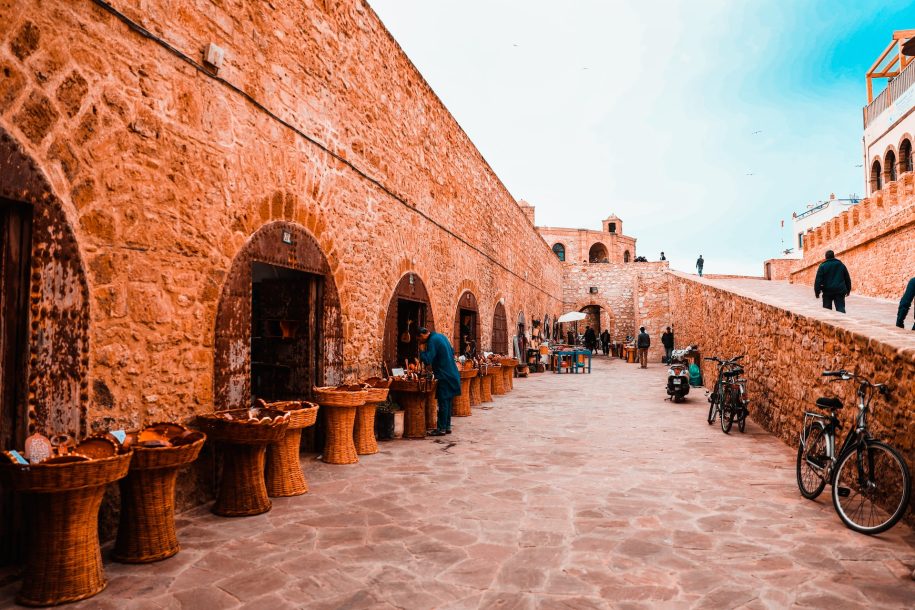Essaouira, the city of the gnaoua. In September, Onde Road (our travel program, edited by Claudio Agostoni) will dedicate an episode to Morocco. In the meantime, we would like to offer you a supplement to the post we published in June about music festivals in Morocco: it is dedicated to the Gnaoua et Musiques du Monde festival in Essaouira, which will be held from June 20 to 23 at its 22nd edition.
In the rich and varied panorama of traditional music that Morocco offers, the gnaoua constitute a very particular presence. On the Atlantic, 350 km south of Casablanca, Essaouira is one of the main centers where the gnaoua culture is rooted in Morocco.
The site where Essaouira stands today has been frequented since the seventh century BC by Phoenician sailors, then by sailors from Mauritania. Respectively in the sixteenth and seventeenth centuries, the Portuguese and the French considered settling at this point of the coast but were unable to establish themselves there permanently. The city was founded in 1760 by the will of Sultan Mohamed Ben Abdallah, as a commercial port on the Atlantic in the closest position to the then capital Marrakesh. Today Essaouira is a fishing port and a tourist resort, with a large beach, beautiful fortifications, and a medina that in 2001 UNESCO declared World Heritage Site.
The port of Essaouira
In general, the Gnaoua are a component of the population that is heir to the slaves of sub-Saharan Africa brought to the Maghreb and destined for Arab-Muslim Spain: some of these slaves did not arrive in the Iberian Peninsula and remained in North Africa, or flowed back there after the Catholic reconquest of Spain. At the birth of Essaouira, the story of Arab-Muslim Spain had already been over for more than a century and a half, but the city actually hosted a slave market. However, the presence of gnaoua was nourished also by other contributions: at its foundation, Essaouira counted on a garrison of the black guard of the sultan; moreover, black workers had arrived from Marrakesh to build the port and the fortifications; finally, in times closer to us, Africans from the troops of French colonial Africa were added to the gnaoua communities.
In Essaouira, the Gnaoua formed a brotherhood and built the sanctuary of Sidna Bilal, named after Bilal, a black slave from Ethiopia, who after his conversion to Islam was enfranchised and stood next to Muhammad, and who, charged with calling to prayer, became the first muezzin. Sidna Bilal is located in the medina not far from the entrance to the ancient Jewish quarter.
In Morocco, the Gnaoua have elaborated their own music and rituals. Music is of great importance in their culture, both for entertainment and sacred purposes. In the squares and in the markets the Gnaoua bring a lively music, rhythmed by big drums and castanets, and accompanied by acrobatic dances. In the sacred part of their ceremonies, such as those held in Essaouira at Sidna Bilal, the music, which has at its center the guembri, a three-stringed lute, and which does not include drums, animates rituals during which some believers enter transe, possessed by supernatural entities invoked by the musicians.
The gnaoua festival of Essaouira was born in 1998. On big stages in various parts of the city, the event presents, in free concerts, gnaoua music in the most different combinations with musicians of every musical genre and origin; but in more intimate spaces it also proposes – with musicians from Essaouira or from other cities of Morocco – gnaoua music in its most traditional guise, and in Sidna Bilal also the sacred aspects of the ceremonies. The festival of Essaouira has played an important role in attracting international attention to gnaoua music, in raising the gnaoua world in Morocco to a respected element of the national heritage, and in making gnaoua culture and music a source of pride and an identity factor for Essaouira.
One of the locations of the festival, is on the fortifications of the Bab Marrakesh gate.
The Gnaoua et Musiques du Monde festival is traditionally opened by a parade of groups – not only Gnaoua – that goes through the main street of the medina. The participation of numerous amateur groups is a testimony to the popularity achieved by Gnaoua culture, also thanks to the Essaouira festival. The photos we show you have been taken on June 20th: we accompany them with some brief information.
Departure of the parade outside the Bab Doukkale gate, one of the access doors to the medina. The musicians play the castanets, a typical Gnaoua instrument. The “raza”, the white headdress, symbolizes the condition of slaves. Sahara Marrakech.


Leave a Reply